Day: August 4th, 2007
127 Corridor Sale eats
Of course, I couldn’t cover the sale without covering the food. Not the meals we ate, mind you, but the snack options available to us in the midst of all the actual shopping. And there were plenty.
Typical fair food: funnel cakes and corn dogs. I especially like the quote-veggie-unquote version touted here… probably because I’d seen “vegetable” interpreted rather broadly elsewhere.
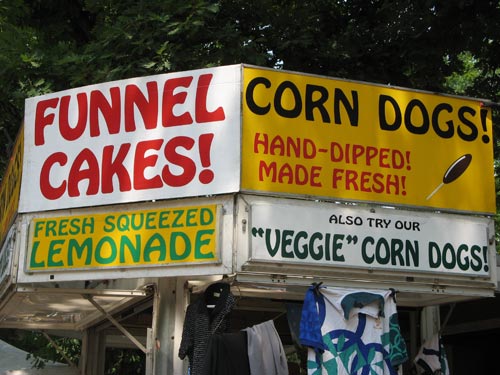
Gallons of fresh-brewed sweetened and unsweetened tea — or “sweet” and “un” in local parlance. Tons of barbecue, of course. This was one of the more elaborate food service stands. At some sales, there was just a giant smoking grill, with mystery meats piled on top.
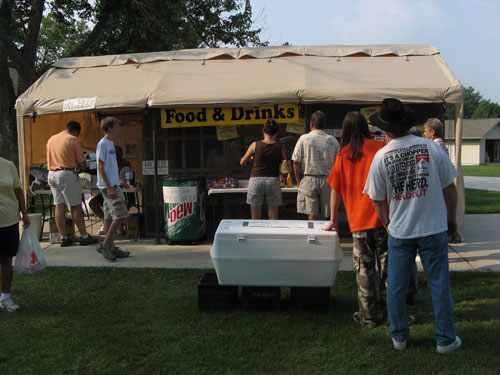
Local dining establishments did brisk business on ice cream (and fried balogna sandwiches):
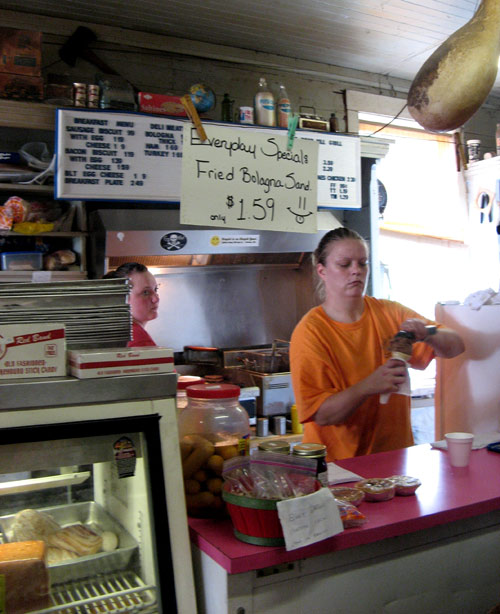
Ooh, I love kettle corn. And even in this almost unbearable heat — so hot that the first day’s flash thundershowers actually caused clouds of steam to rise up from the ground — the savory-sweet scent was irresistible.
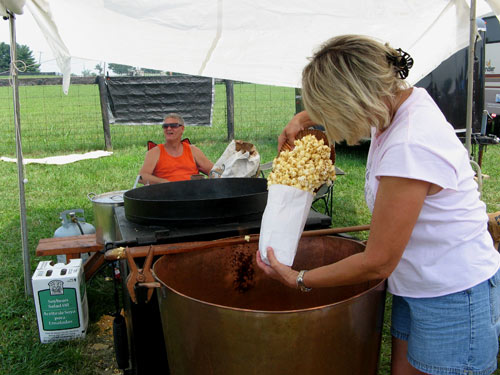
I will posit that one can only pass by about a dozen of these signs before giving in to sheer curiosity. (I did not feel the same way about fried pickles, which I also saw, but managed to forego sampling through the entire route.)
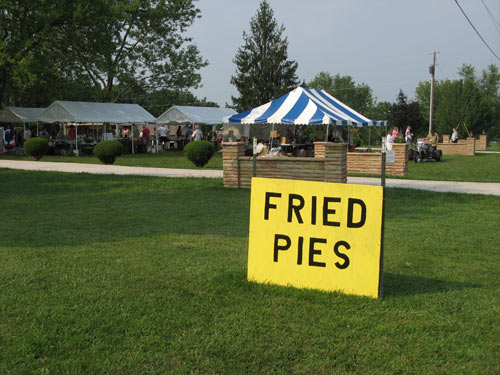
At this particular stand in Kentucky, a handwritten sign promised fresh fried pies at 2:30PM. By 2PM, a small crowd had formed around the empty tables, clamoring for “Mae’s pies.” I took the devoted following as a favorable sign and went off in search of J, who “convinced” me to split one with him. The pies emerged from a fryer off site, fragrant and still warm.
Not what I expected, actually. I had envisioned a wedge of pie — perhaps battered — and deep fried. This was flaky pastry dough, wrapped Hot Pockets-style around fruit filling (here: peach), and dropped into oil… or more likely, lard.
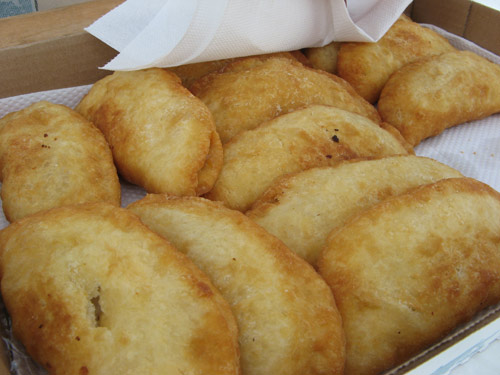
Oh. My. God.
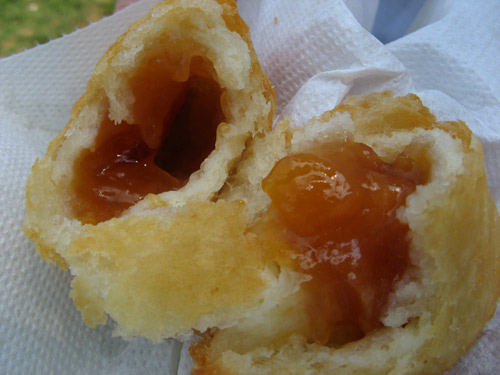
Thankfully for my heart and waistline, I only discovered the glories of fried pie on the second to last day of the sale.
Deep and dirty South
We whipped through northern Tennessee with surprisingly few stops, considering Fentress county had been advertised as the headquarters of the 127 Corridor Sale. After crossing the state border into southern Kentucky, we hit what I think we can all agree in retrospect was the roughest segment of our road trip.
We knew that driving through the rural South would be an eye-opening experience, but I was unprepared for just how eyebrow-raising and, at times, stomach-churning it could be. The overall level of education was discouragingly low: more than once, simple multiplication and addition proved challenging. Spelling, too: I saw more variations of “collectibles” and “antiques” than I possibly could have imagined.
Other observations: Given the dining options available to us thus far, it’s no surprise that Tennessee and Kentucky are two of the ten heaviest states in the nation; more than 25% of TN and KY adults are considered obese. (In the areas along the sale route, I’d put the percentage far higher.) Note the two butter canisters in this set, which clearly also exhibited the most wear and tear.
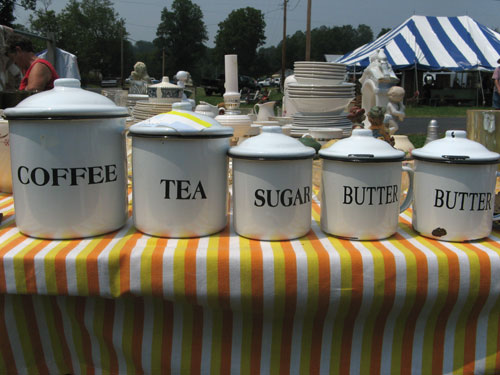
We saw cardboard boxes crammed with the most random assortment of objects for sale, including colored contact lenses(!) and birth control pills(!!)
But most appalling of all were some of the southern Kentucky sale items. Not the weirdly kitschy, useless junk (which was consistently abundant throughout), but the downright offensive, racist junk. Everywhere. High flying confederate flags. Lawn jockeys. Sambos and Mammies. Scores of segregation-era memorabilia… most of which — even more disturbingly — appeared to be modern reproductions, suggesting a current and growing market for such items.
Other offerings: “Rebel marijuana” sacks and “Terrorist body bags”. Egads.
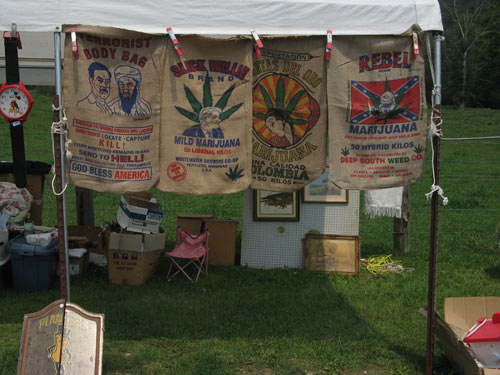
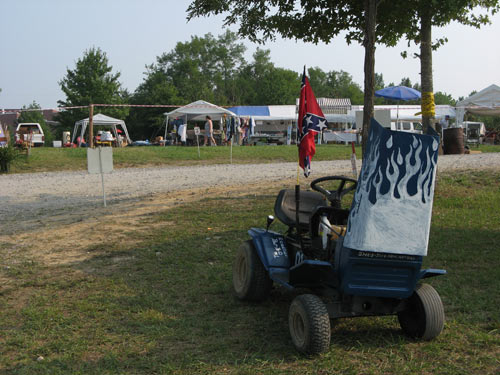
….and here, your all-purpose “Fighting Rooster Cage for 2″:
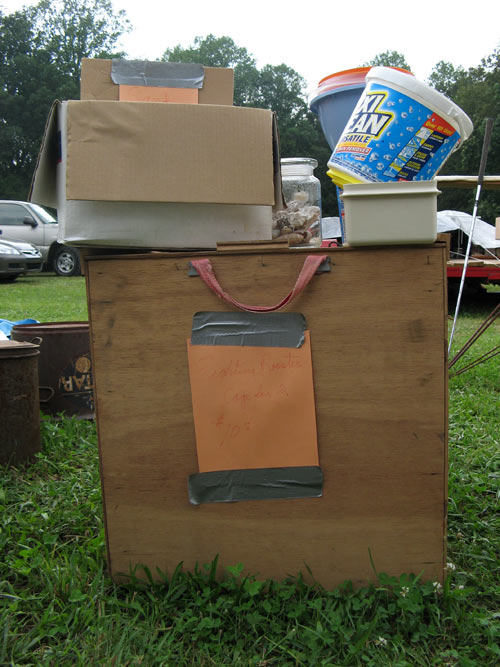
The ignorance could well be a function of poverty. In Clinton county (which incidentally, is named for the seventh governor of New York State – and three-time mayor of New York City — DeWitt Clinton), the median household income is $21,711 (vs. $37,369 for all of Kentucky — itself ranked among the bottom ten states in the nation, based on income); fully one quarter of families live below the poverty line. Things did not improve much in the picturesque but poor Lake Cumberland region to the north of Clinton: in Russell and Casey counties, the median household incomes are $24,462 and $23,949, respectively.
The items for sale along this stretch reflected the state of the local economy: we knew we hit the nadir when we came upon one particularly grimy lot, with grimy vendors to match, featuring a trailer piled high with used mattresses (at $30-$40 apiece) and shelves of stained pillows. Eww.
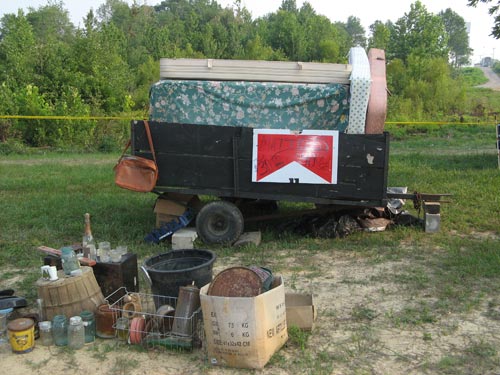
This was the one day I bought not a single thing.
Tennessee wine
To break up the endless stream of outdoor sales, we made a brief side trip this morning to Highland Manor Winery and Vineyards, Tennessee’s oldest licensed winery, conveniently located just off US 127. I was intrigued since I’d always associated the state more with whisky, or even… well, moonshine. Tennessee, though, has a wine-making history that dates to the late 19th century. The nascent industry was thwarted, however, by the institution of statewide Prohibition in 1909.

Although a few producers continued to make wines, it wasn’t until the 1980s that the state’s wineries began a serious resurgence. Today, there are over two dozen wineries operating in Tennessee, though with its estimated $13 million in annual sales, the state’s wine market share is dwarfed significantly by its neighbor to the East, North Carolina.
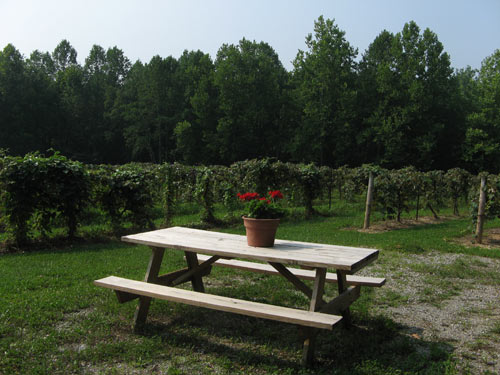
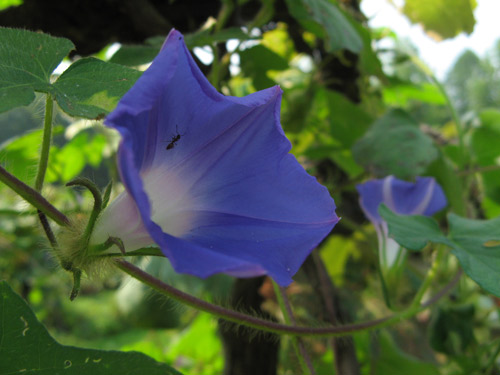
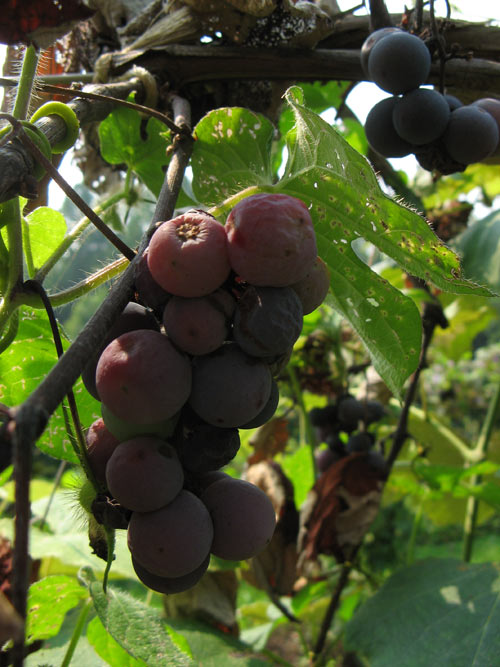
We arrived early on a Saturday morning, and found the winery quiet, and I was able to wander among the vines freely, with no supervision. Eventually, a young woman emerged into the gift shop to offer us select tastings from among Highland Manor’s 15 varieties (dry, semi-dry and sweet), many of which are produced from grapes grown on the winery’s estate vineyards.
Although we were not exceedingly impressed with the available product — Highland Manor’s award-winning muscadine has a one-year waiting list — we picked up a couple of bottles as souvenirs of our visit. When S pointed out that all of the bottles were labeled “table wine” and that none noted a vintage year, our guide explained matter-of-factly that omitting the information saved the winery the cost of reprinting new labels for each harvest. There’s something almost brilliant about that logic, no?
Search
Popular Tags
Categories
Archive
- July 2010
- July 2009
- January 2009
- November 2008
- September 2008
- August 2008
- July 2008
- June 2008
- May 2008
- April 2008
- March 2008
- February 2008
- January 2008
- December 2007
- November 2007
- October 2007
- September 2007
- August 2007
- July 2007
- June 2007
- May 2007
- April 2007
- March 2007
- February 2007
- January 2007
- December 2006
- November 2006
- October 2006
- September 2006
- August 2006
- July 2006
- June 2006